BY LOUISA CORNELL
When I was nine years old, my father’s Air Force career took our family to the little village of Kelsale in Suffolk, England. Some of the most magical memories of my childhood are of the three years we lived in this quaint and unique place. It did not take long for my brothers and I to become part of the “gang” of village children who played together every day. It was the 1960’s in a small, rural English village. Which means, our playground was the entire village and we had free run of it so long as we didn’t make too much mischief and were home in time for supper.
Kelsale is an old village. The Guildhall was built in 1495. The pub, the Eight Bells, was built early in the 17th century. The highest point in the village is at the top of Church Street. There stands the 11th century Norman era Church of St. Mary and St. Peter. This church and the surrounding cemetery with its leaning tombstones with ancient dates and inscriptions was the site of many a game of Robin Hood and His Merry Men, King Arthur and His Knights, and any variety of hide and seek you can imagine. And where did all of these adventures begin? Where did we meet to plan a day’s mayhem as only a group of children ages 6 to 11 could do?
At the Lych Gate
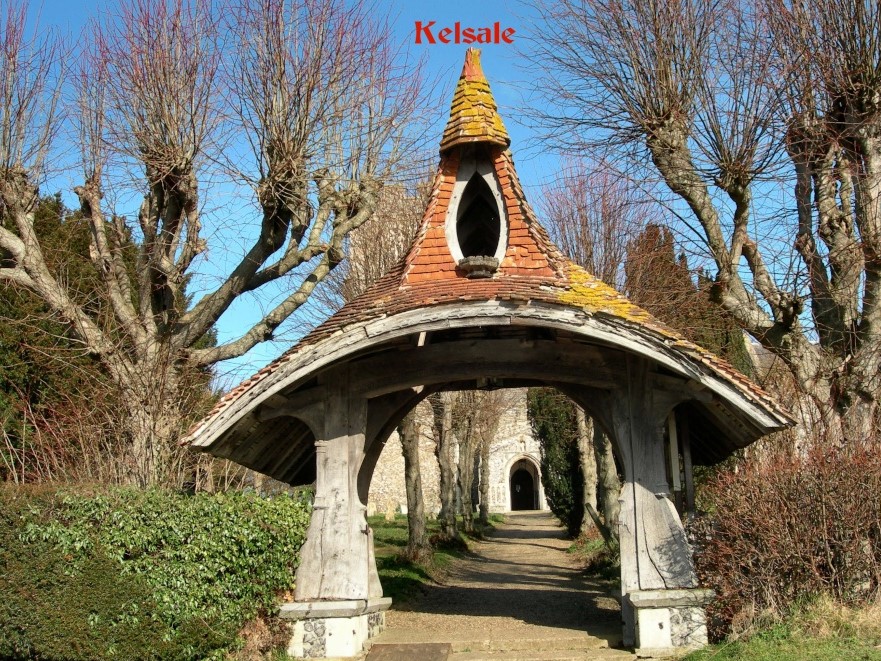
Lych is an Anglo Saxon adjectival form for corpse. In addition to lych gate (which can also be spelled lichgate, lycugate, lyke gate or lychgate,) the term is incorporated in other funereal terms from the Middle Ages. The lych bell was a hand bell rung before the corpse as it traveled from the home to the church and possibly from the church to the cemetery, depending on the distance. The lych way was the path along which the corpse was carried to burial. The lych owl was another name for the screech owl because its cry was thought to be a portent of death. And a lyke-wake was a night watch over the corpse.
There were no mortuaries during the Middle Ages. People died at home and were placed on a bier to be taken on their final journey. The first stop on that journey was often the lych gate, where the body might remain until the funeral a few days later. More often than not, attendants or guards remained against body snatchers, no matter what the weather. The corpse bearers carried the body of the deceased under the lych gate at the entrance to the churchyard and placed it on a communal bier. Bodies were buried in shrouds, not caskets. The priest would then perform the first part of the funeral service there.
Lych gates were built at the entrances of churchyards as early as the 7th century. These early lych gates were basically a covered gate built of wood, and very few of these earliest examples have survived in any form. They became more commonly built beginning in the 13th century. They were crafted of older timber construction and traditionally were roofed with wood tiles, clay tiles, or thatch. The large timber beams framing the gateway were often carved with decorative elements. Some had lichstones, large flat stones in the middle of the gate upon which the body might be placed. Many had benches inset into the sides of the gateway to seat the watchers and / or corpse bearers whilst shielding them from the elements.
The oldest surviving lych gate is thought to be the one leading into St. George’s churchyard in the Beckenham area of South London. It has been restored in part, but the roof and much of the structure is over 700 years old.
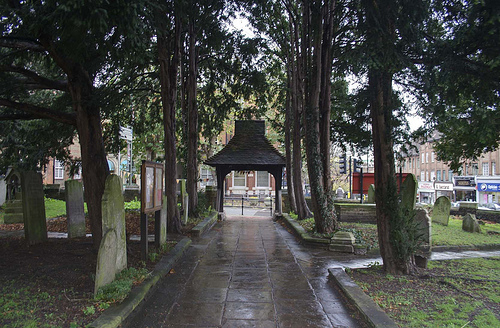
A more modern custom, which began during the Victorian era, was the closing of the gates once a wedding began in the church. The children of the village were set as the gatekeepers and the bride and groom had to pay them in order to pass through the gate.
Below are some other examples of this unique and only slightly macabre structure.
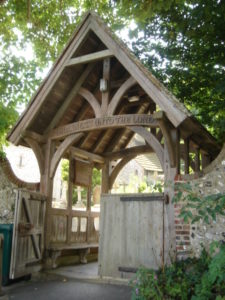
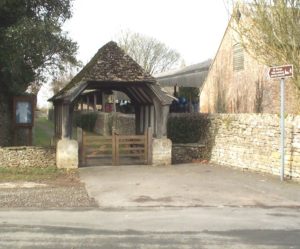
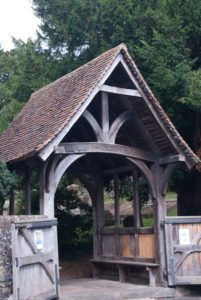
I knew none of the fascinating and tiny bit gruesome history of the lych gate when I was meeting my friends there as a child. Had we known, I am certain we would have spent far more time trying to frighten each other or telling each other ghost stories under the shelter of our childhood meeting place. Countless adventures began and ended at the lych gate over the three years I lived in Kelsale. Which was probably more appropriate than we knew. After all, death is often considered life’s final and most daunting adventure. And for innumerable thousands, the lych gate was the first stop on that journey.
What a very interesting post. Thank you for the history lesson, and the photos are pretty cool, too!